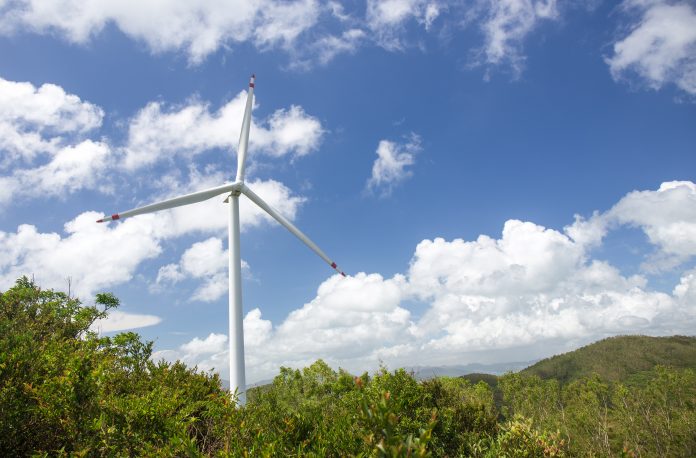Charlotte Hugman, Climate & Energy Benchmark Research Analyst at the World Benchmarking Alliance, ponders if Asia can be the world’s first region to achieve energy transformation for all
When a national economy cannot largely detach itself from heavily polluting industries it can be significantly more challenging to decarbonise. Asia is one such region where the energy question remains highly complex and delicate. Asia’s challenge is that it is home to 4.5 billion people and an economy dependent on manufacturing, from extraction to production. It is also a continent of great difference – countries of varying scales and levels of development. Transformation across Asia is an uphill task. But, if done right, it is an opportunity for Asia to become the model for global decarbonisation and energy transformation.
The lie of the land: Renewable Energy in Asia
Asia’s renewable energy capacity generation is on an upward trajectory. According to a recent International Renewable Energy Agency (IRENA) report, Asia accounted for over half of all new renewable capacity added globally in 2019(1). The same report shows that Asia’s share of global renewable generation capacity stands at 44%, almost double that of Europe’s (23%)(1). Advances in renewable energy generation are being strongly guided by policy – most countries have committed to renewable energy targets and focused on national policy that stimulates generation. Policies such as the guaranteed purchase of cleanly generated power at competitive tariffs and offering permits and licences to facilitate better grid interconnection are generally favoured.
Investment is also healthy. IRENA reports that between 2006 and 2016, Indonesia, Malaysia, the Philippines, Singapore, Thailand and Vietnam invested a combined total of $27 billion in the renewable power sector(2). This is creating an ongoing shift of Asia’s generation assets towards renewable sources. China is now the global leader in hydropower and wind energy generation and in 2019 accounted for 50% of the global increase in bioenergy capacity(1). Meanwhile, the continent contributed 60% of the world’s new solar energy capacity achieved last year(1). Such progress is only the beginning of decarbonisation; however, full energy transformation is not clean energy generation alone. It is ensuring that all have fair and equal access to such energy.
Putting people at the heart of energy transformation
Huge disparities exist in population densities, economic development, levels of pre-existing infrastructure and physical climate, both within countries and between them. Due to this, an energy landscape is emerging in Asia that is increasingly focused on localised, decentralised solutions achieved through the utilisation of public-private partnerships. Projects such as the Solar Homes System in Bangladesh have brought clean electricity to four million previously off-grid homes, equating to 12% of the country’s population(3). This approach has benefits well beyond the environment. Access to cheap (and clean) energy enables people to run businesses, education not to be interrupted, it provides health benefits and can aid gender parity.
Stimulating such partnerships is not just the responsibility of governments. The private sector is equally accountable for transforming the generation of and access to clean energy. The private sector, as well as its products, activities and impacts are deeply embedded in economic and social systems. Therefore, a transition that works for all will depend on a systems thinking approach. Companies that demand the most energy and have the highest emissions are not limited to the energy sector.
Through the World Benchmarking Alliance’s (WBA) SDG2000 – which lists the 2,000 companies with the greatest impact on sustainability – those critical to meeting decarbonisation and energy transformation have been identified. Of the 450 companies to be benchmarked in this transformation, only around 12% (or 53 corporations) are currently taking action on science-based targets. This suggests a significant need for multiple sectors to act. Companies with high- energy operations must demand cleaner sources of energy, which means setting robust targets founded in scientific research.
Policy will also be a key stimulus in implementing the next phase of positive change for Asia. Unlike Europe, where finding a consensus has been challenging, the nature of governance in Asia is providing an opportunity for the region to collaborate. The growing electrification of the automobile sector in China is one example where this approach is showing success. Asia also stands poised to benefit from leapfrogging technologies and policy interventions. On a national scale, countries like South Korea, who is implementing “green growth” strategies, can learn from Europe’s shortfalls. For example, unbundling without due consideration of policy support for renewables, or enabling energy companies to reduce emissions by winding down ownership of generation assets, therefore, passing accountability for emissions onto others. For various sectors, process innovation will be key. The WBA Automotive Benchmark has identified that some companies in this sector are planning for a rapidly changing landscape. Asian manufacturers are among those to stand out in the benchmark for facilitating a shift to different modes of transport, services and business models.
The future is green
Asia is primed for progress and should be optimistic about the opportunities before it. As well as continuing to increase the proportion of renewables in its energy mix, Asia is one of the best-positioned regions for clean sources of energy to become economically viable across the board. This will take serious collaboration between the private sector and policymakers. But the Asian story thus far, including the rise of the Asian Tigers and the emergence of hi-tech industries, has been founded on such an approach. Collaboration, transparency and accountability will underpin the speed of decarbonisation in Asia. Its success will depend on not leaving any person, sector or nation behind in the transformation.
References
1 https://www.irena.org/-/media/Files/IRENA/Agency/Publication/2020/ Mar/IRENA_RE_Capacity_Highlights_2020.pdf
2 https://www.irena.org/-/media/Files/IRENA/Agency/Publication/2018/Jan/IRENA_Market_Southeast_Asia_2018_summary.pdf?la=en&hash=13DB344A7F8C8EBE30E2EB1A4CAFEC9A63BDED11
3 https://www.centreforpublicimpact.org/case-study/solar-home-systems-bangladesh/











